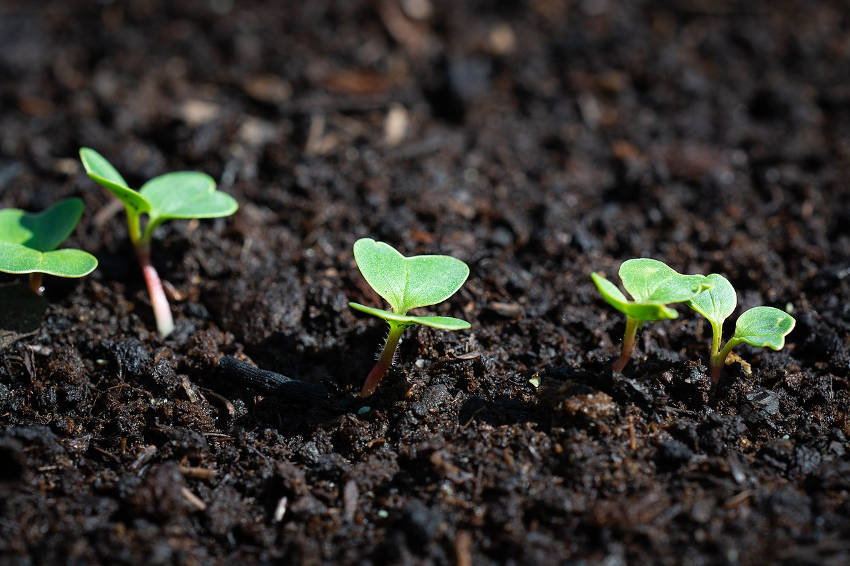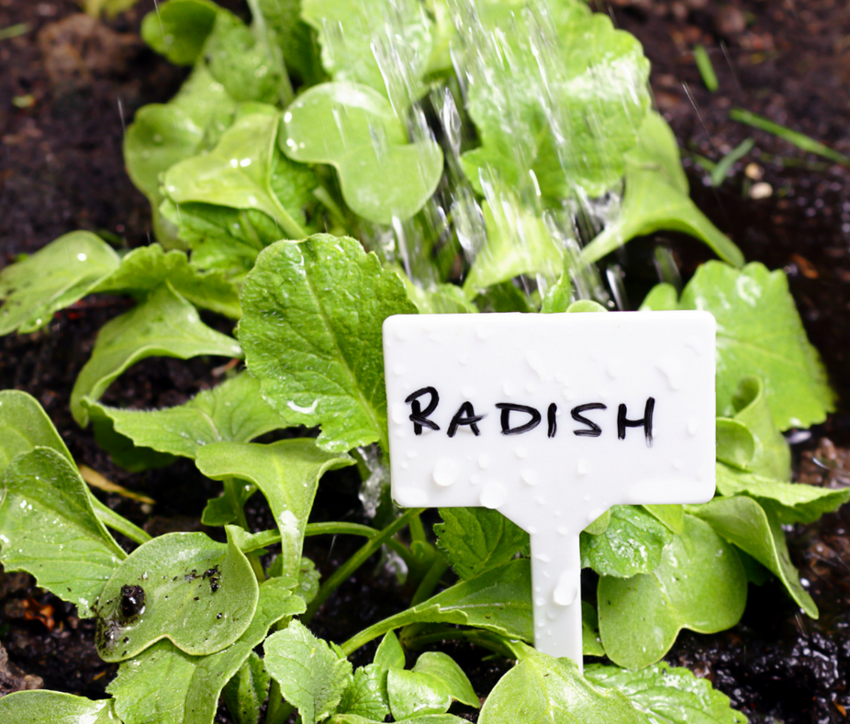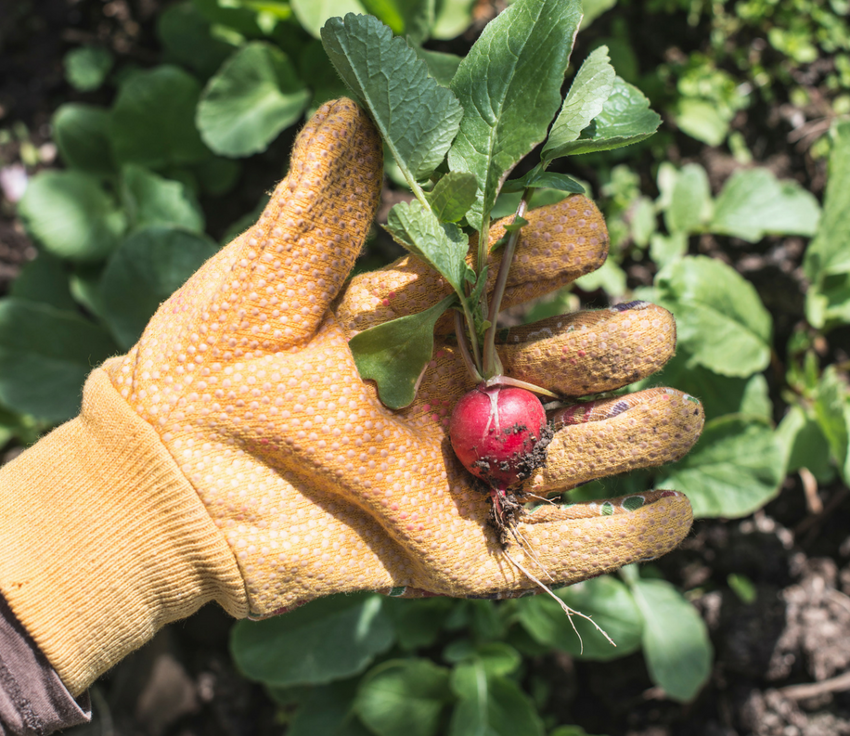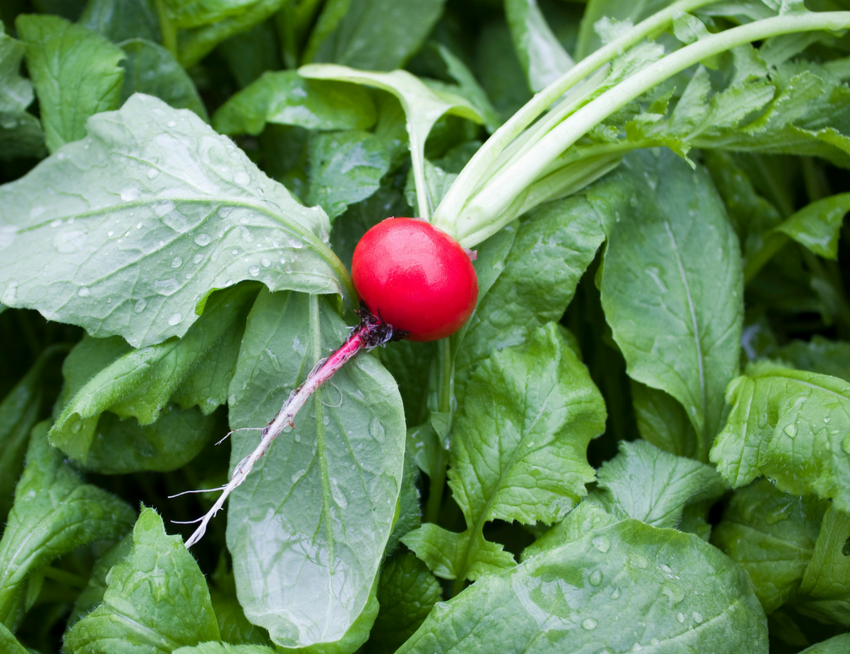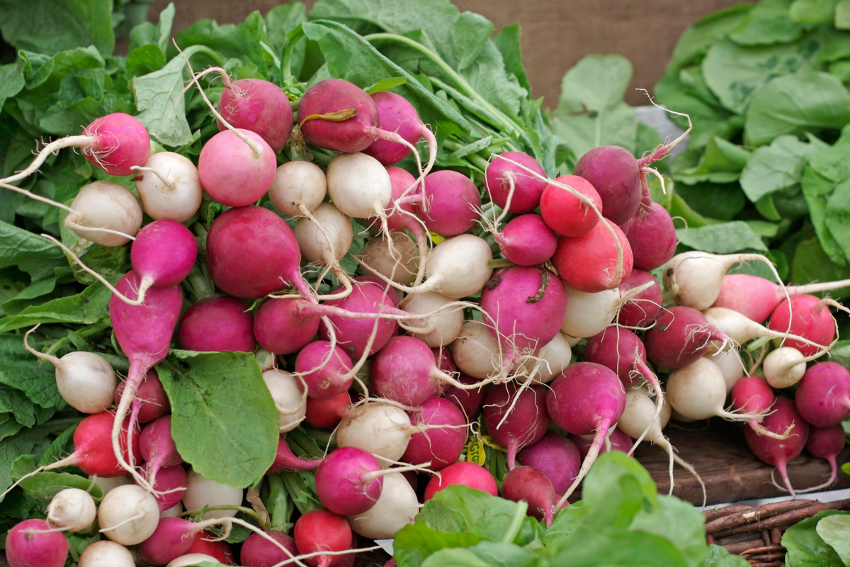In most areas of gardening, patience is a necessary virtue. Successful vegetable growing usually works to a time span of seasons, with the long anticipation of the coming harvest all part of the pleasure.
However, you don't always need to wait months to taste the results of your gardening work. With radishes, the whole process from seed packet to plate can take as little as four weeks, making them a useful crop for any veggie grower who's pressed for time.
More to Life Than Salad
Radishes are probably most familiar as crunchy red globes adorning salad plates, but there's far more to this peppery member of the brassica family.
You can grow radishes in red, white, purple, or black to add colourful interest to your plate. Shapes and sizes range from the typical small balls to the impressively long daikon, much-used in oriental cooking. And with plenty of heirloom varieties available, you'll never run out of new novelties to try.
But whichever type of radish you decide on, the main distinguishing feature is speed: there's simply no faster way of putting home-grown food on your table.
How to Sow and Grow
With radishes, sowing little and often is important. Their speed of growth means you're likely to be landed with a glut of roots maturing at once, so space small sowings a week or so apart to avoid being overwhelmed.
However, this fast turnaround means radishes are ideal for squeezing an extra crop out of a vegetable bed at the start or end of a season, when you have a few spare weeks to play with.
Sowing Radishes in Containers
For best results, your container should be at least 20cm deep to accommodate the long radish tap root. Scatter the seeds lightly and cover with a centimetre of compost. Once the seedlings appear, thin to around 5cm in each direction. Harvest the roots on the young side, as radish are quick to bolt if they feel overcrowded.
Sowing in Open Ground
Radishes are also happy to be sown direct into open ground. Sow the seeds around 1cm deep in rows 15cm apart. Aim for a spacing of 5cm between seeds.
Seeds can also be sown dotted in clumps to use up small spaces, but avoid overcrowding. Radishes will still grow when packed fairly close together, but the roots will quickly become woody and unpleasantly strong-tasting.
Growing Tips
Whether you grow them in containers or sow direct, radishes have some fairly specific growing preferences.
- Radishes grow best in cooler conditions. Direct sun in high summer will encourage bolting, but too much shade will produce large leaves at the expense of root growth. This makes them ideal for the lower-temperature conditions of spring and autumn.
- Although radishes appreciate fertile soil, make sure any compost or manure you add is well-rotted and thoroughly dug in to avoid the roots splitting.
- Well drained soil is essential, but should be balanced by regular light watering. Soaking will split the roots, while dryness will rapidly cause bolting to seed.
How to Harvest
Radish should be harvested as soon as they're mature - unlike many veggies, they keep more successfully in the refrigerator than in the soil. It's better to harvest slightly immature plants rather than to let them go even a couple of days past their peak.
Maturing radishes will poke the top of their roots through the soil surface. Depending on the variety, once the visible part is around a thumbnail in size, they'll be ready to harvest.
Remove the stems and leaves immediately, cutting close to the root top. Although you'll often see bunches of radishes for sale with the leaves attached, this causes the roots to quickly deteriorate and shrivel as the wilting greens suck their moisture up.
Washed and dried, the roots can be kept in plastic bags in the refrigerator for two weeks or more. The leaves are also and can also be kept separately for up to three days.
Microgreens and Sprouts
If you have plenty of spare radish seeds - or if you've let a crop bolt by accident - you can use up the surplus by growing them as microgreens or sprouts. They'll take a bare week to produce masses of mildly spicy leaves perfect for salads or soups.
Radish in the Kitchen
Although fresh radish roots are a mainstay of crunchy salads, the plant is more versatile than you might think, adding a peppery zing to both raw and cooked dishes.
- Cooked roots make a great basis for a light but spicy soup. Or, throw a handful into stews alongside potatoes and carrots to add a fresh, crunchy dimension.
- The roots also work well grilled or roasted, with the sweet, caramelised edges contrasting with the peppery flesh.
- Use fresh radish leaves as a spicy salad leaf, an interesting variation on the rocket or watercress theme.
- The leaves also make a great cooked vegetable. Try them stir-fried with Asian flavours for a quick noodle dish, or wilted with garlic and olive oil to dress pasta, or steamed as an alternative to spinach.
- Radish roots pickle and ferment extremely well. Preserve them using any recipe calling for carrots, cucumber, or cauliflower.
- Lastly, if your plants bolt to seed, all's not lost. The seed pods are edible and can be used raw or cooked in any dish where you'd normally use the root.
5 More Reasons to Grow Radishes
However, radishes bring other benefits to the garden beyond providing a fast-growing, tasty crop.
- Sow radish and carrot seeds together. The radishes will germinate first, and as they grow they'll break up the soil in preparation for the slower-growing carrots, encouraging larger, straighter roots.
- Flea beetles are attracted to radish, chewing small holes in the leaves but causing little damage to the fast-growing roots. This means radishes can act as a decoy, protecting more delicate plants nearby.
- Radish can also repel pumpkin beetles and other curcubit-family pests.
- Pre-sow rows of radish to mark crop boundaries in larger vegetable beds. It's much better looking than string, and provides a tasty crop by the time the other seedlings have sprouted.
- Early sowings of radish can also provide a rough-and-ready measure of soil temperature. Germinating quickly once the earth reaches around 13C, radishes can signal it's time to get sowing with more delicate seeds.
Radishes are often underestimated by veggie growers. They might not offer the excitement of exotic spices or the sheer tastiness of a perfect heritage tomato, but they're dependable and far more versatile than most people think. And with such a short time to wait for a harvest, they can fit seamlessly into even the most hectic growing season.
